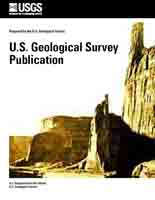
Distributed Volcanism—Characteristics, Processes, and Hazards
Links
- Chapters:
- Chapter K : Temporal, Spatial, and Chemical Evolution of Quaternary High-Silica Rhyolites in the Mineral Mountains, Utah
- Download citation as: RIS | Dublin Core
Introduction
Distributed volcanism is defined by regions of dominantly, but not exclusively, monogenetic eruptive vents that are commonly mafic. Volcanic eruptions within distributed fields can range in composition from basalt to rhyolite and produce all types of volcanoes in all tectonic environments. This diversity in eruption composition and style reflects complex and varied magma ascent and storage conditions. Eruptive vents in distributed volcanic fields are scattered in space and time, so the locations and timing of future eruptions are unknown but may be generally forecast based on patterns of previous volcanic activity and overall tectonic setting. This Professional Paper and its chapters address the current understanding of the characteristics, processes, and hazards related to distributed volcanism, providing new insights into magmatic and volcanic processes that will lead to more effective forecasting and mitigation of eruption hazards from this underappreciated style of volcanic activity.
Suggested Citation
Poland, M.P., Ort, M.H., Stovall, W.K., Vaughan, G.R., Connor, C.B., and Rumpf, M.E., eds., 2024, Distributed volcanism—Characteristics, processes, and hazards: U.S. Geological Survey Professional Paper 1890, https://doi.org/10.3133/pp1890.
ISSN: 2330-7102 (online)
| Publication type | Report |
|---|---|
| Publication Subtype | USGS Numbered Series |
| Title | Distributed volcanism—Characteristics, processes, and hazards |
| Series title | Professional Paper |
| Series number | 1890 |
| DOI | 10.3133/pp1890 |
| Publication Date | October 17, 2024 |
| Year Published | 2024 |
| Language | English |
| Publisher | U.S. Geological Survey |
| Publisher location | Reston, VA |
| Contributing office(s) | Volcano Science Center |

